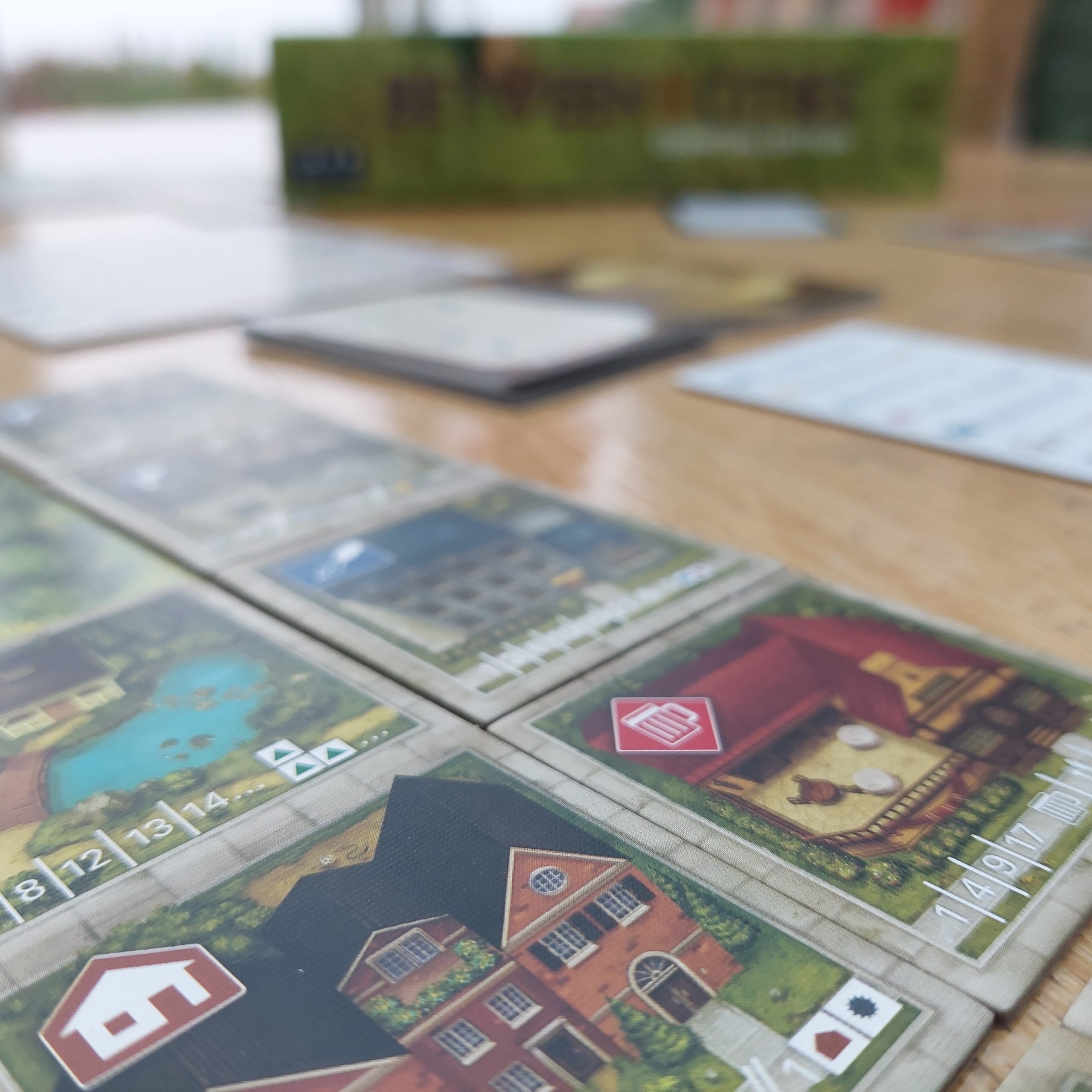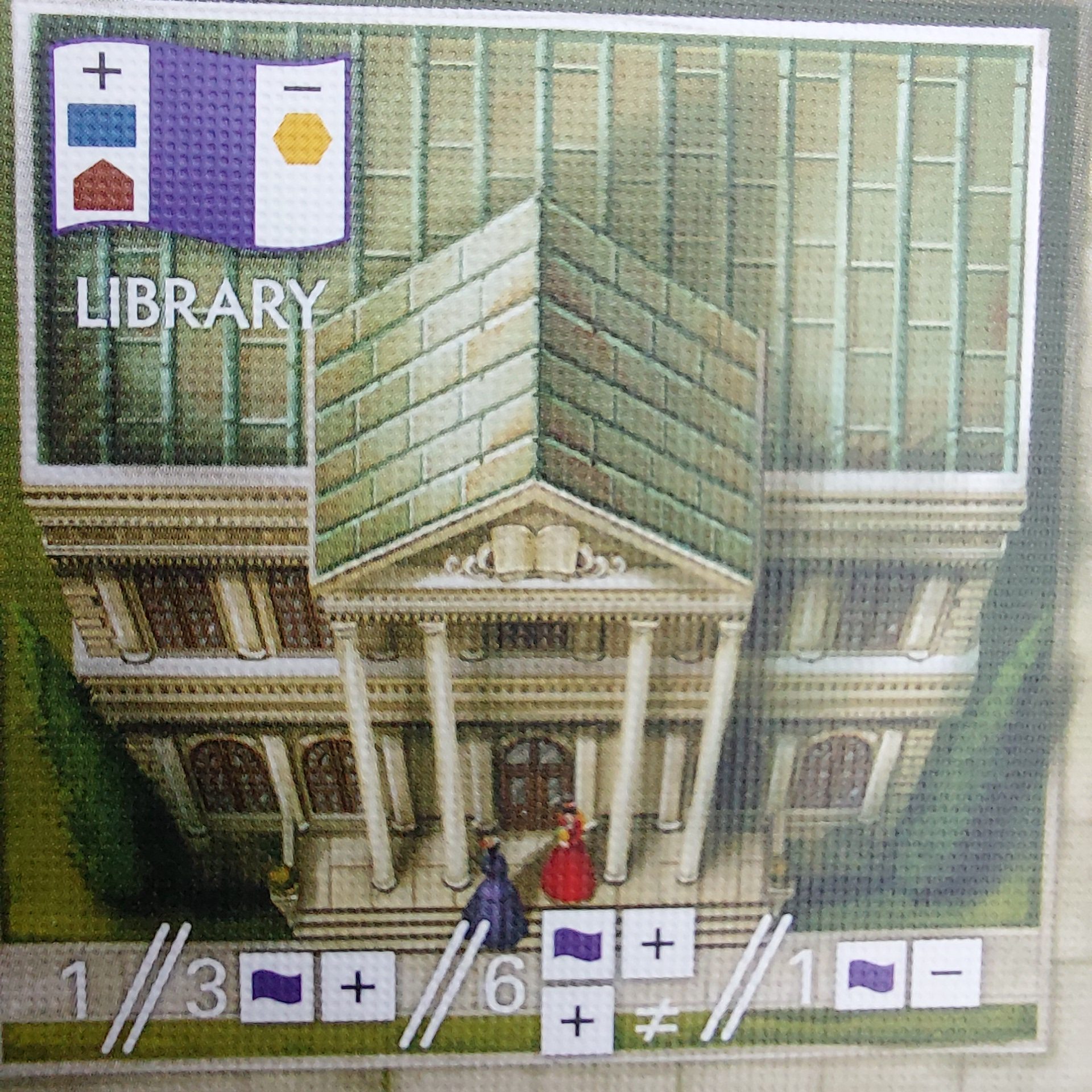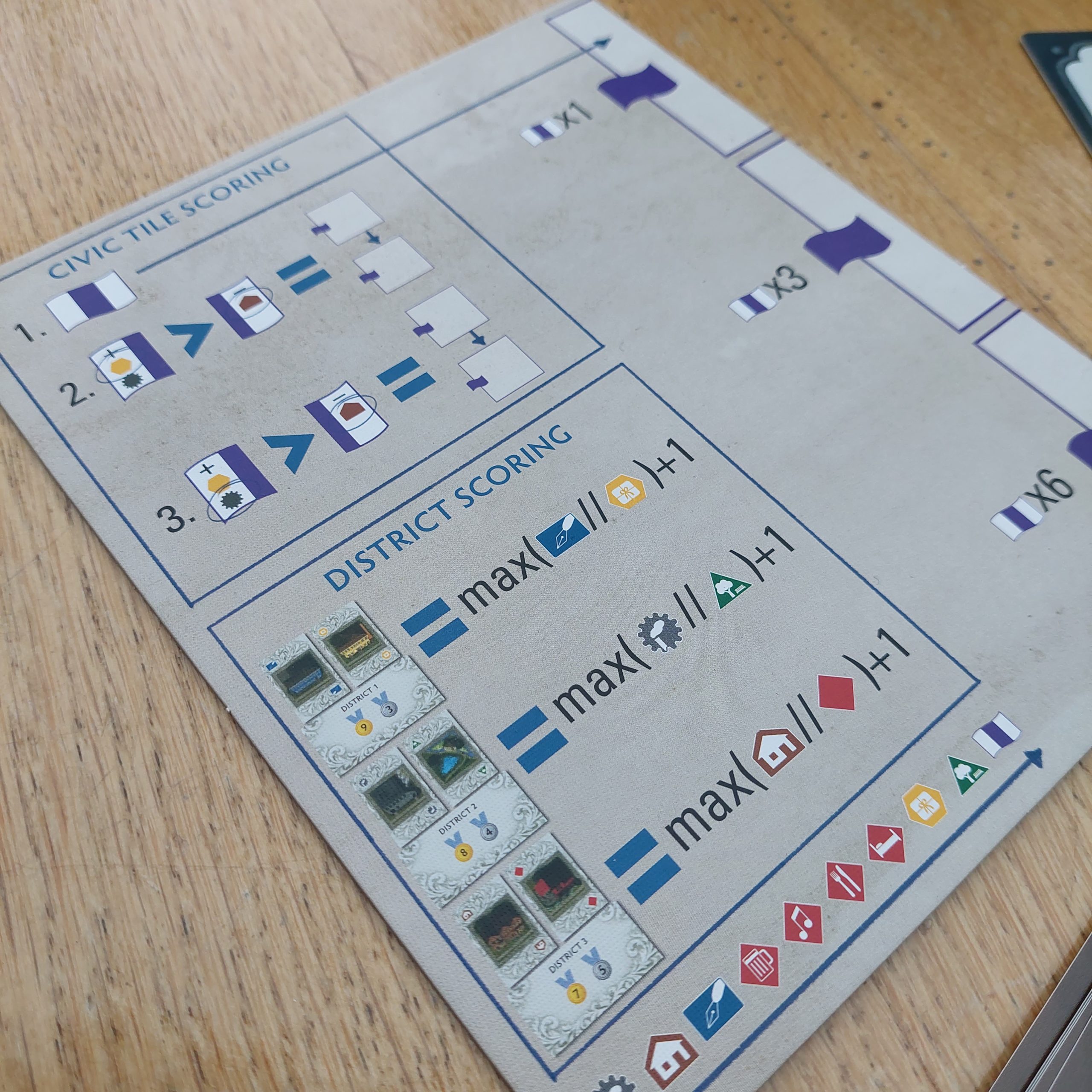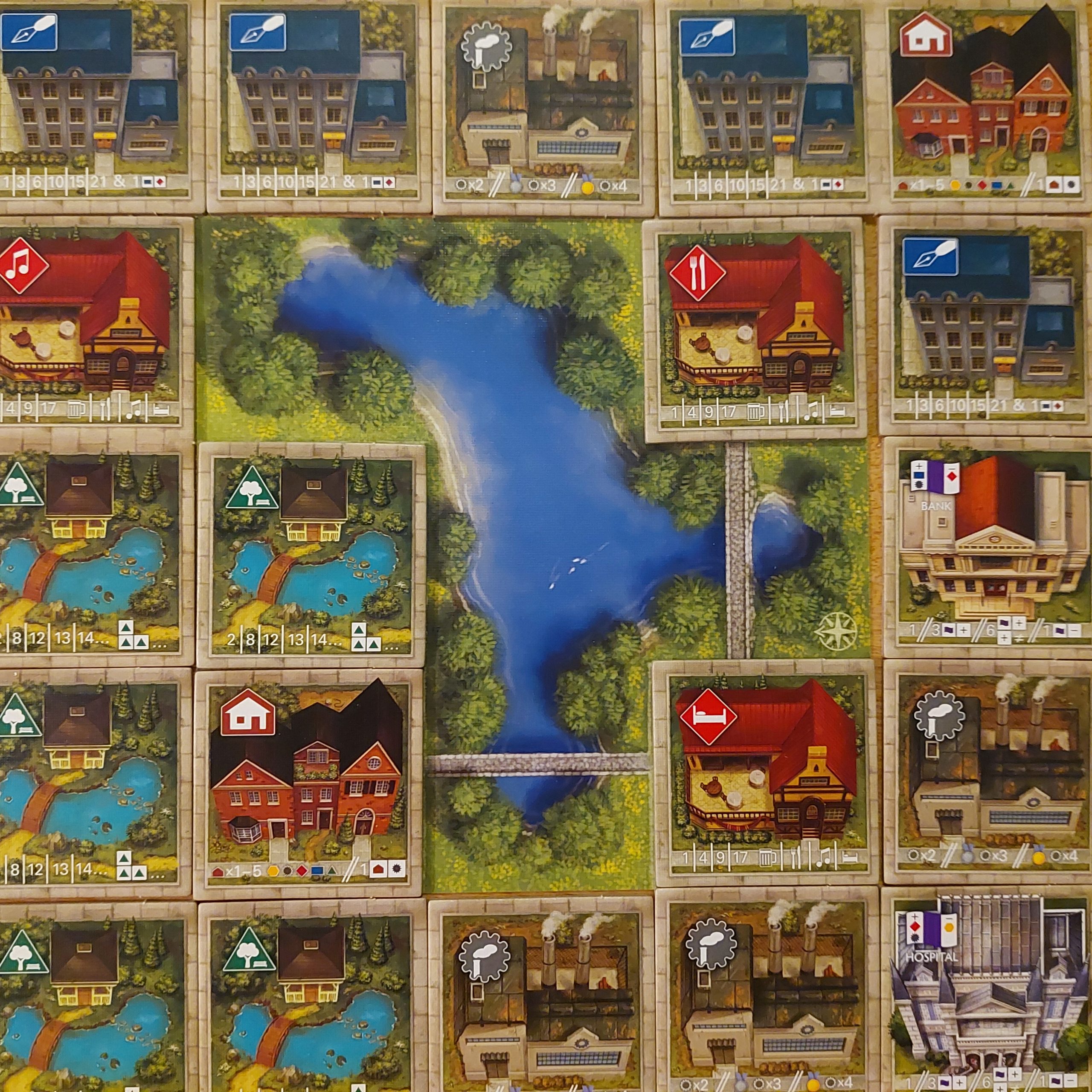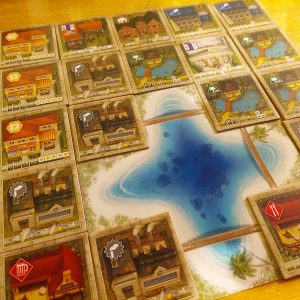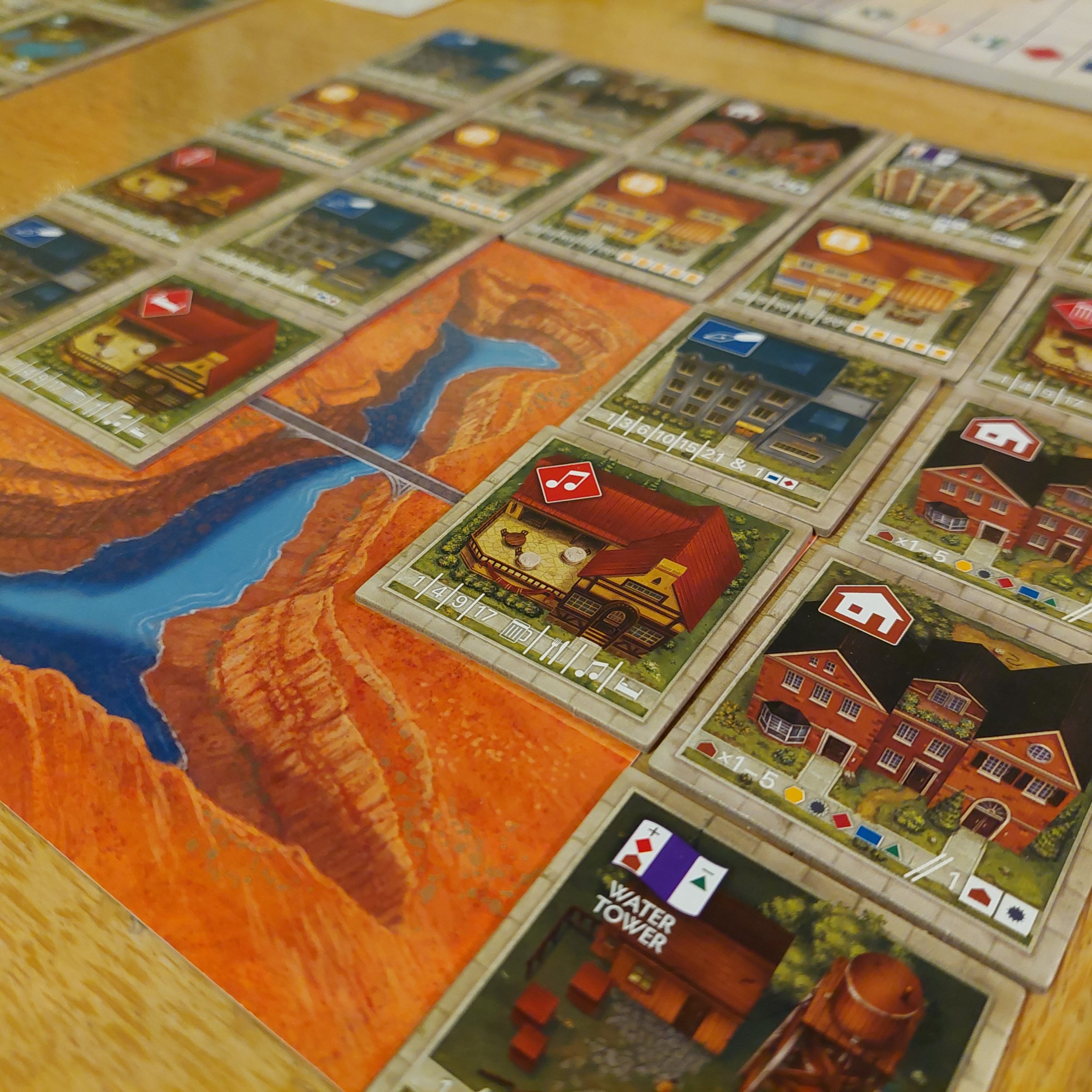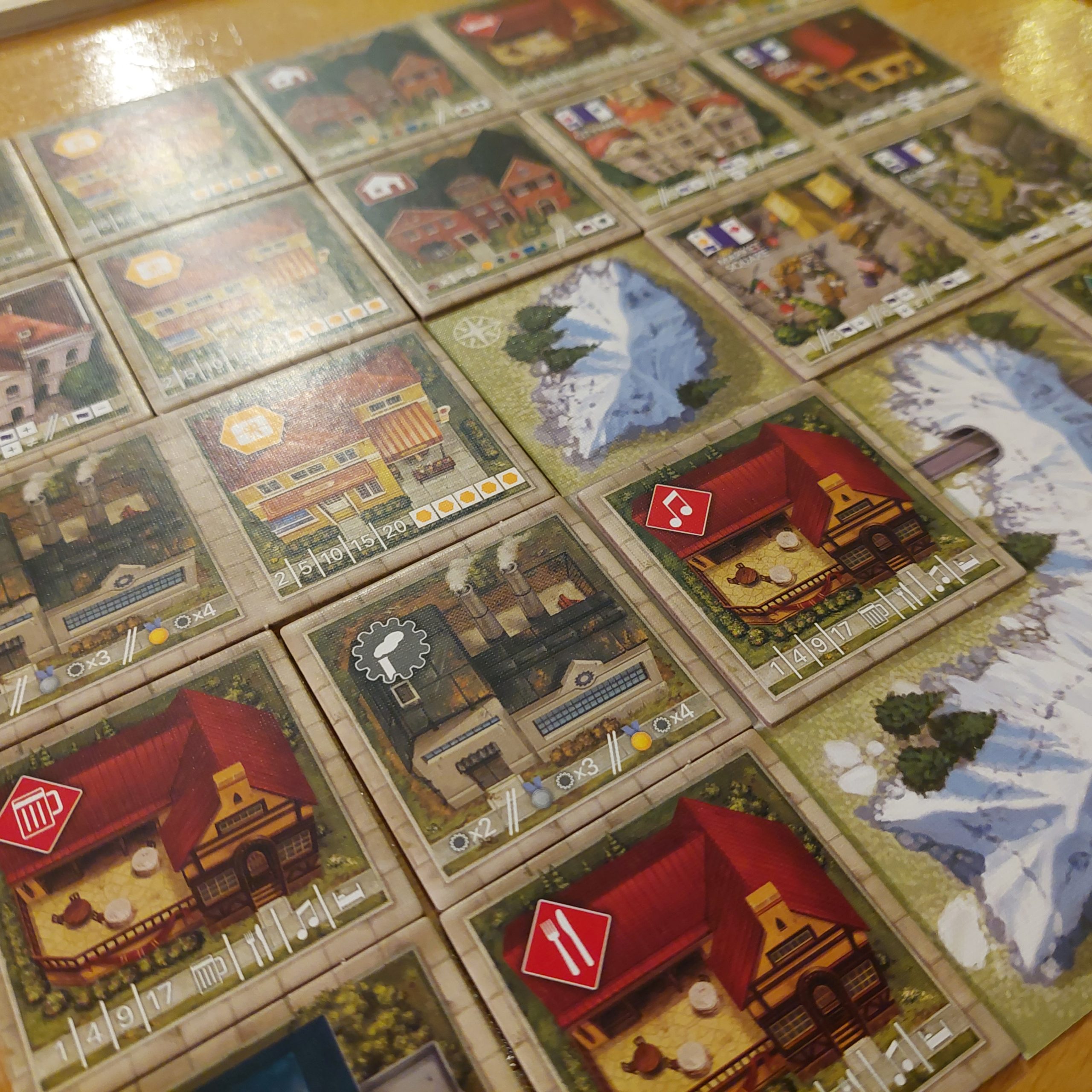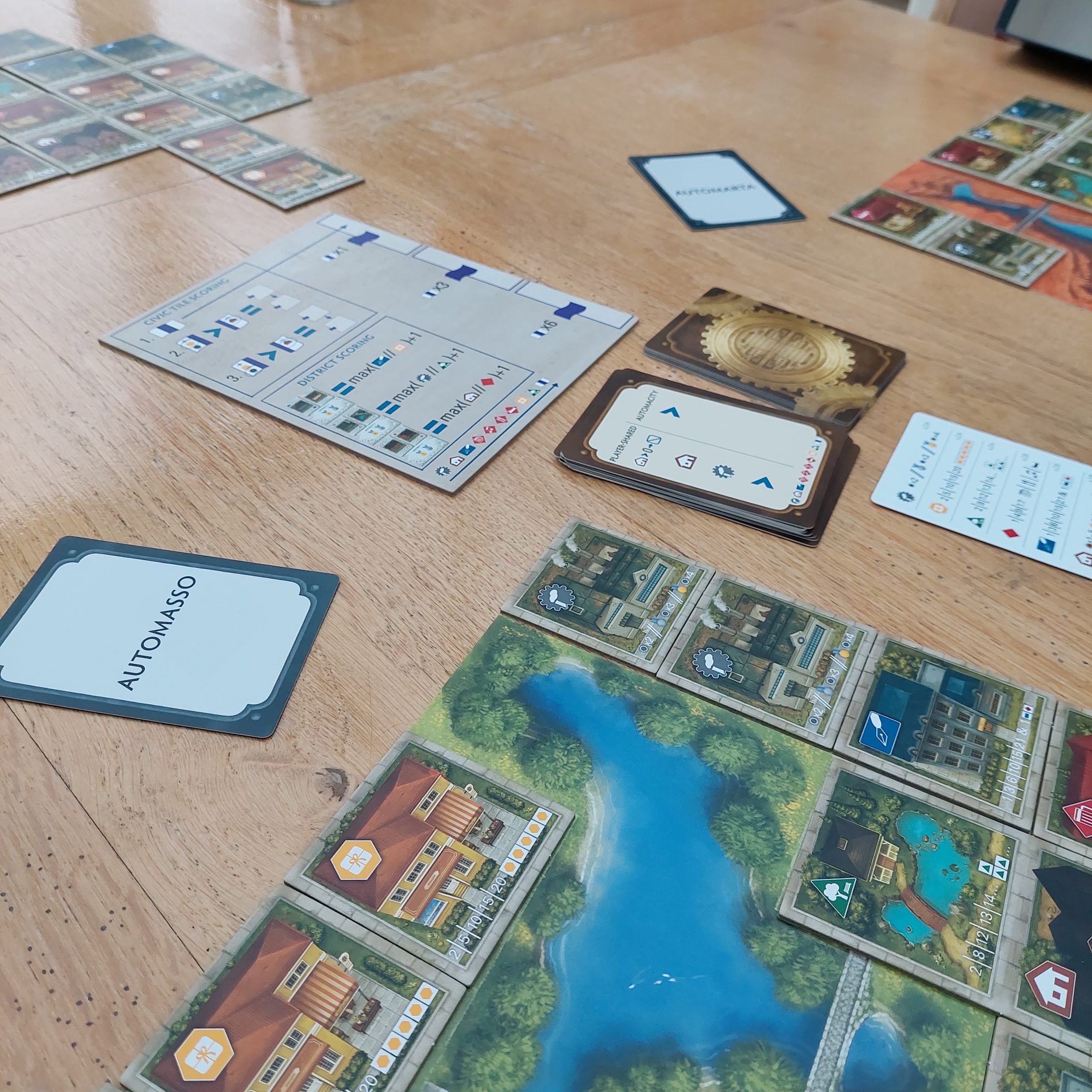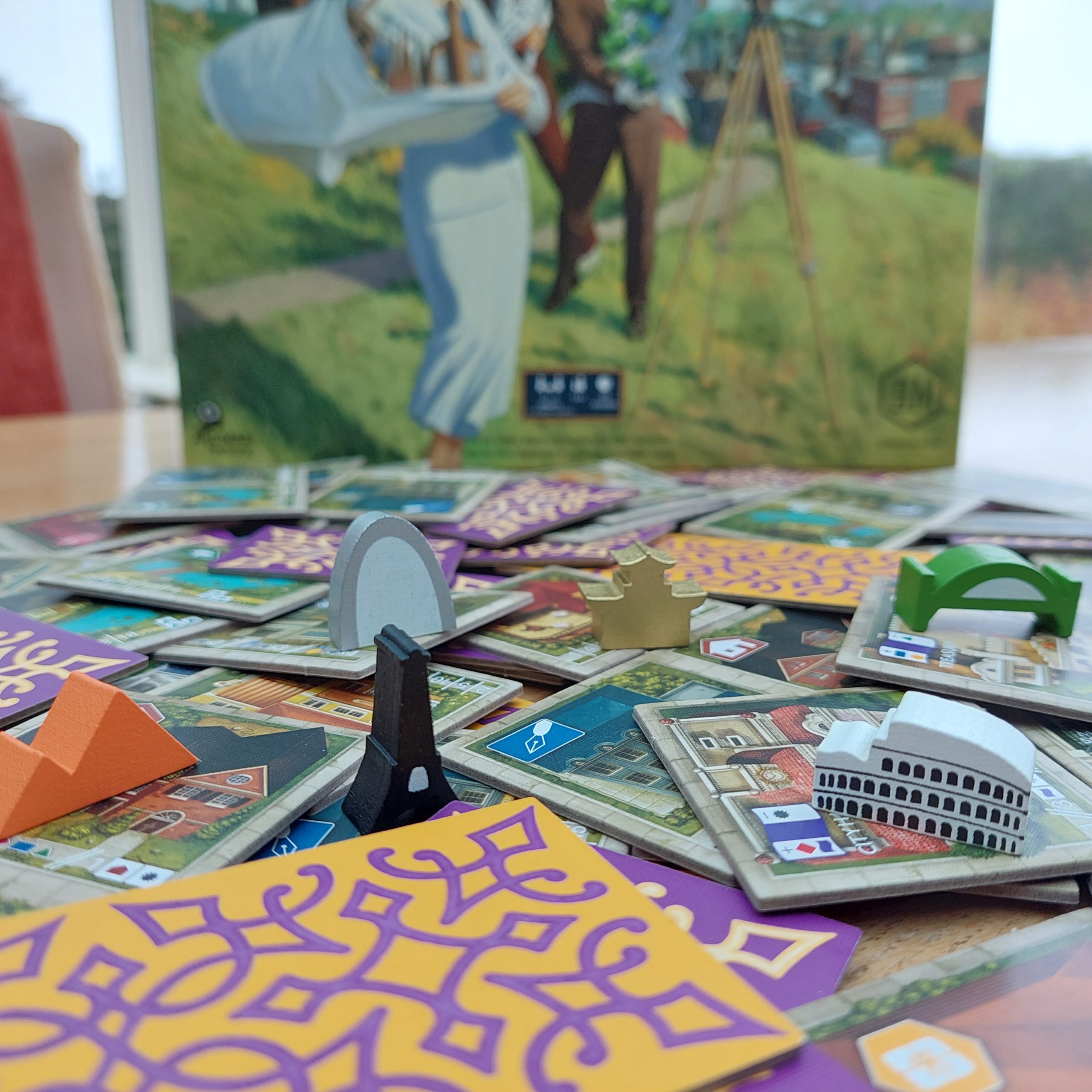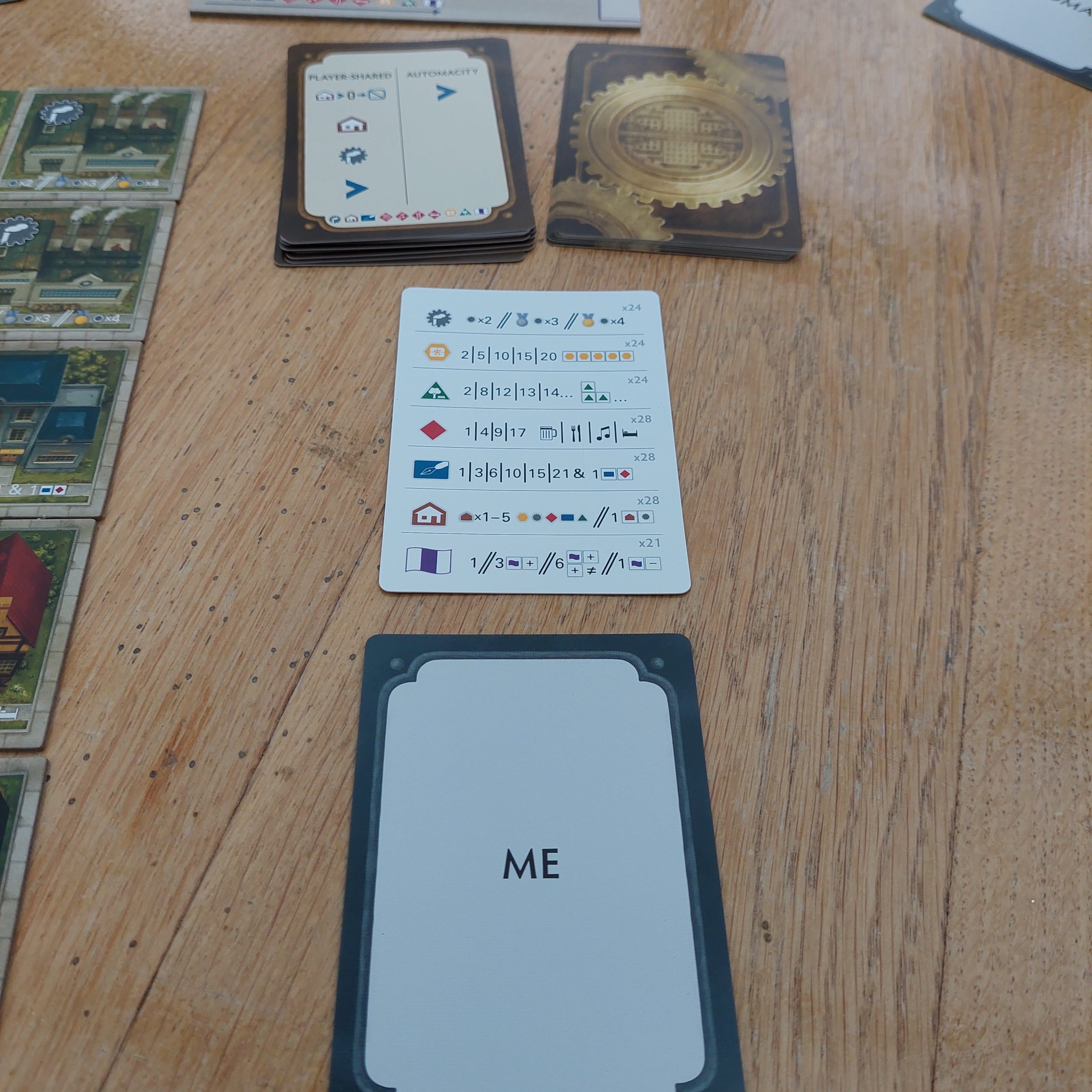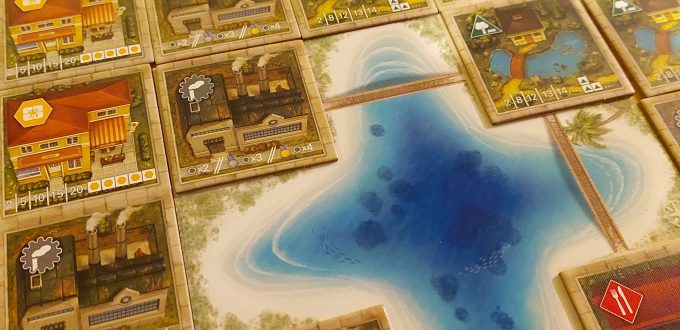We are diving into the novel tile drafting mechanics in Between Two Cities again, but in new Essential Edition, the Capitals expanded gameplay is included!
Publisher: Stonemaier Games
Designer: Matthew O’Malley, Ben Rosset
Solo Designer: Morten Monrad Pederson
Artist: Laura Bevon, Agnieszka Dabrowiecka, Ossi Hiekkala, Beth Sobel
Release date: 2022
1-7 Players (2 player and solo mode automa variants)
Age: 14+
30 mins
* Tile Laying * Spatial Puzzle * Semi-Co-operative * Communication * Competitive * Two Player * Multiplayer * Solo Mode * Automa Factory * Close Drafting * Tableau Building * Pick and Pass * Fun * Family * Asymmetric landscape boards * Civic Buildings * New Artwork
What is better than a game you know you really like but haven’t yet added to your collection? When it is released and re-packaged with expansions integrated into the base box! And Stonemaier Games have done just that. Just like they did with Viticulture and Viticulture Tuscany expansion, the Essential edition of Between Two Cities preserves the core base game, but includes the previously separate Capitals expansion. Does this make a great game greater? Well, I’m here to help you decide!
Note: whilst there have been a few rules tweaks, the components mentioned below are included in Capitals already. So if you have both the base game and the Capitals expansion, this Essentials edition is not…well…essential!

We Built this City on…….semi-co-operative competitive partnership……..wait, what???
Ha ha okay so I know that sounds strange, but Between Two Cities really is like that. And for all its novelty, it works! As I have already covered the tile laying, fast playing base game in detail, I won’t risk repeating myself – you can find all the core details and how to play Between Two Cities here. What I’ll focus on in this review is the Essential content and how it changes the basic game play!
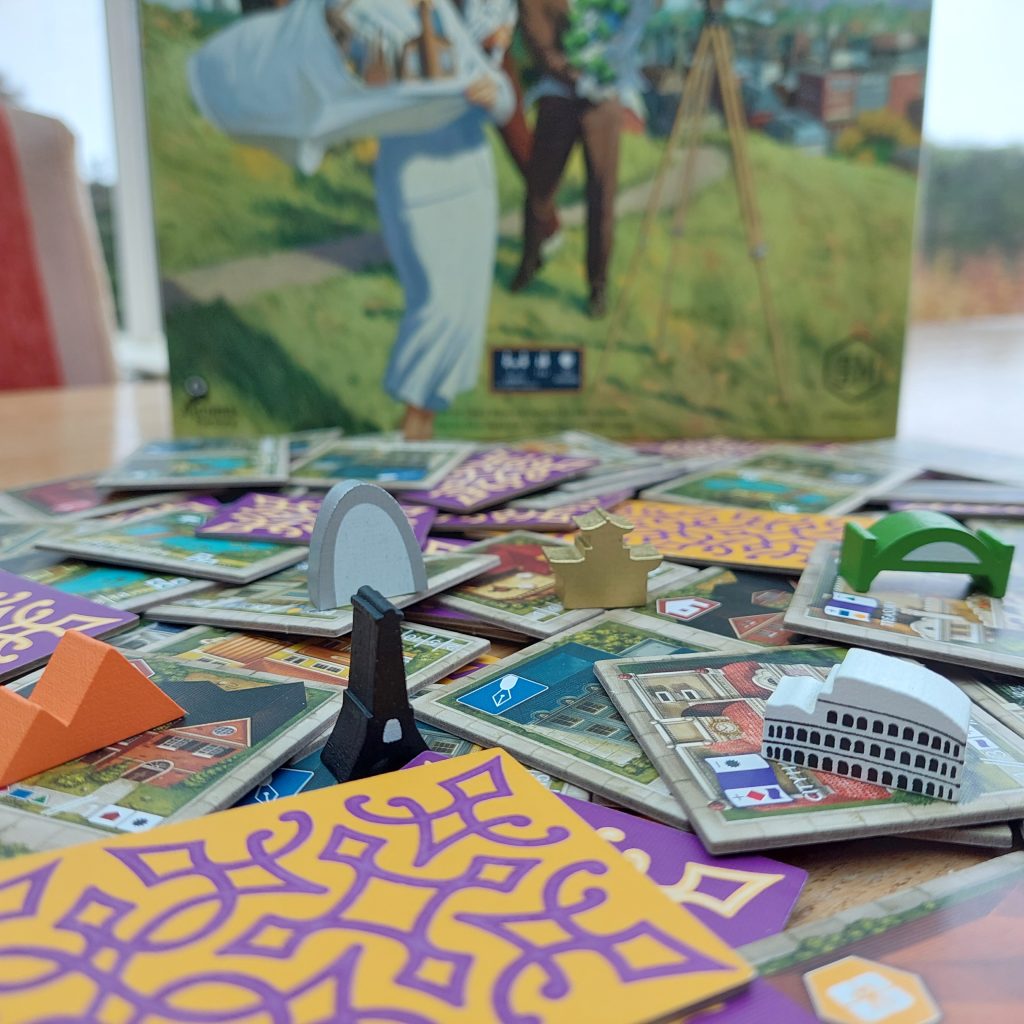
New Build!
So let’s show you what Essentials adds to the base game:
- 7 Asymmetric landscape mats;
- 21 Civic Building tiles;
- New artwork;
- Rule change: new two player winning condition and advanced two player mode;
- Rule change: optional advanced District variant; and
- Scorepad instead of the GIANT score board
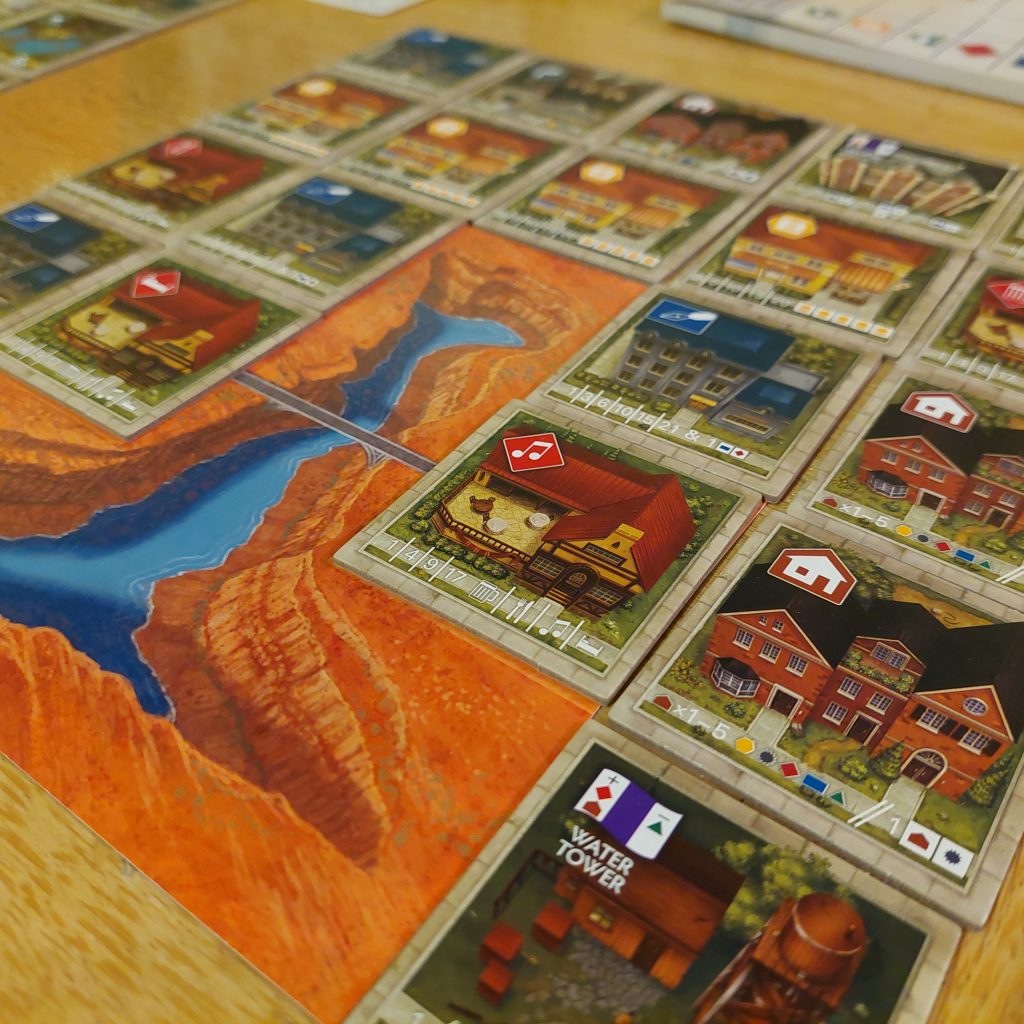
Lush Landscapes!
Building your cities now feels like a more unique and puzzly experience. With a randomly selected landscape mat showing a natural feature to be built around in each of your (now slightly larger) 5 x 5 sized cities, grouping just got geographical! The mat itself must form part of the 5×5 grid and your tiles must be placed on and around it such that the whole city never extends beyond 5×5. Bridges can help (or hinder) in terms of buildings that score (or don’t!) when they are adjacent. But any building group not connected by a bridge will be considered divided at scoring time!
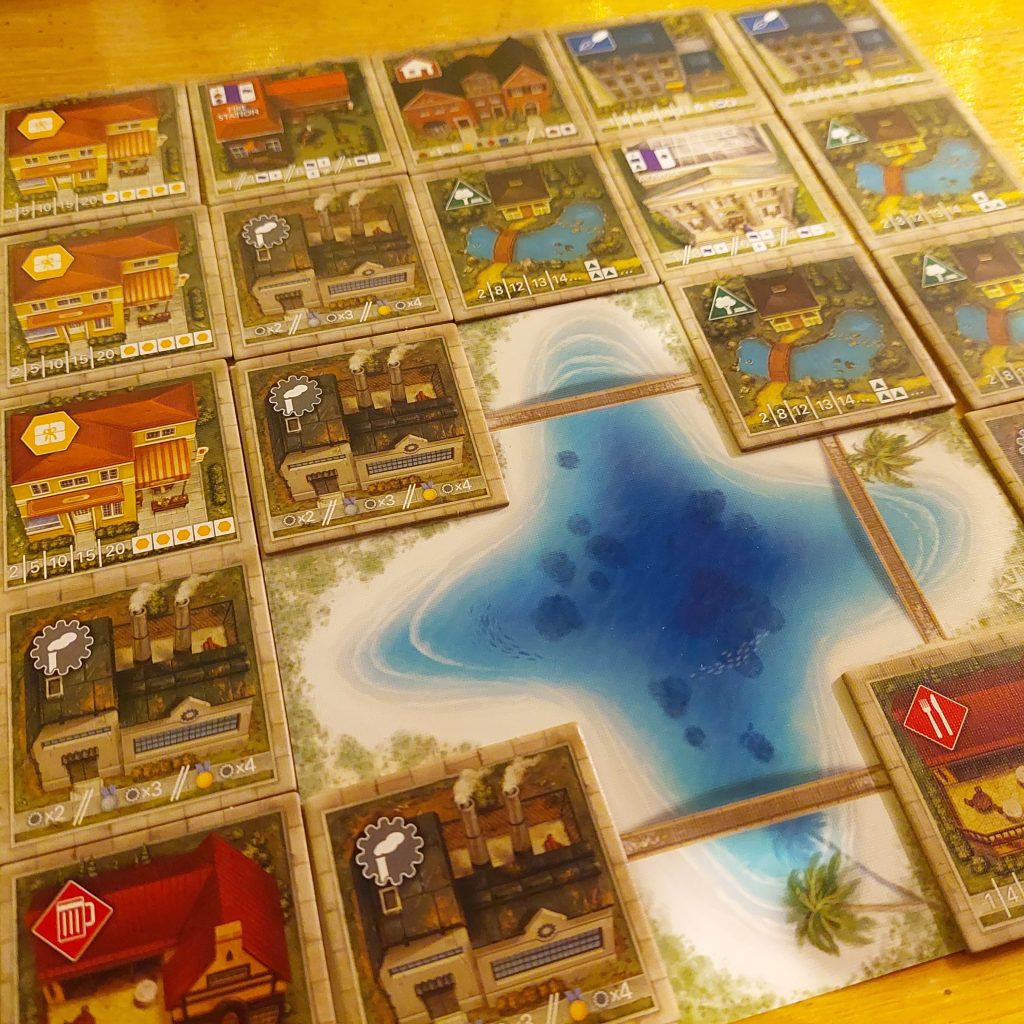
Having these landscapes to consider when building out and grouping really elevates the game for us. And whilst the close drafting, pick and pass game play will always mean two games aren’t the same, the extra features to consider ramps up replayability for us. It also means that looking around the table at what other players are likely to be grouping gets harder to predict. Bridges give a hint as to potential links, but strategies now have more factors to consider.
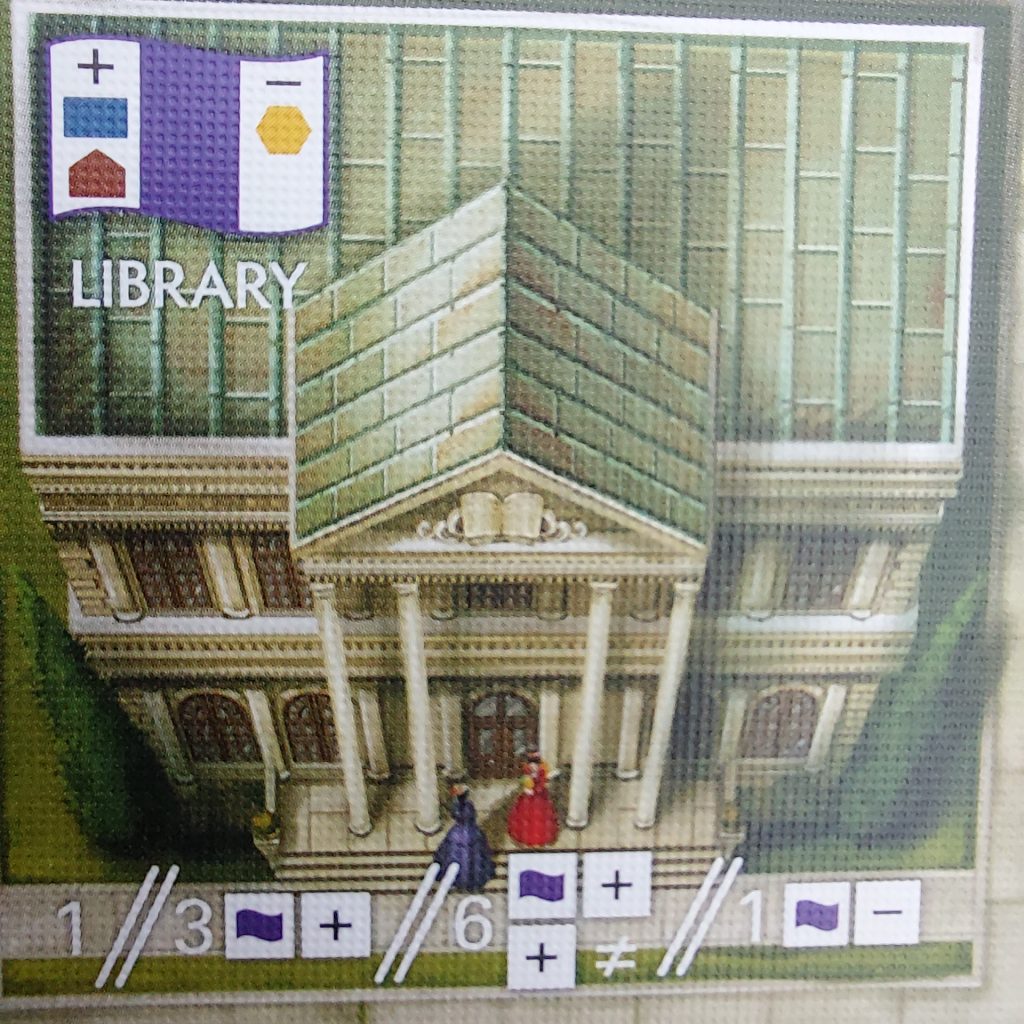
Civic City!
Which brings us nicely onto the Civic Building tiles. Absent from the base game, these purple wonders score you points based on what is built around them, and each one is different!
Every Civic Building has two preferred neighbours, and one they would rather cross the street to avoid! If you can place a nice neighbour next door, the Civic Building scores 3 points. Sandwich it in between one of each type, and it doubles to 6! Even if it misses buddying up completely, or goes next to a Building it doesn’t much rate, it will still score 1 point. So, e.g. the Library will score 3 points if it next to a House or an Office, 6 if adjacent to one of each, and only 1 point if next to neither, or if it is placed next to a shop. Points aren’t taken away for sub-optimal placement, so it never feels too mean. More of a missed opportunity than anything. But with each one potentially worth 6 points, that’s not an opportunity you want to miss often!
In our games to date, I have gone heavy on drafting and placing Civic Buildings as a strategy. I like them and I think their rewards are worth it. Particularly with the interplay with the landscape features where long runs of shops or connected groups of Parks can be trickier to achieve. They also play well with House scoring that increases with the more Building types you can cram into your city by end game.
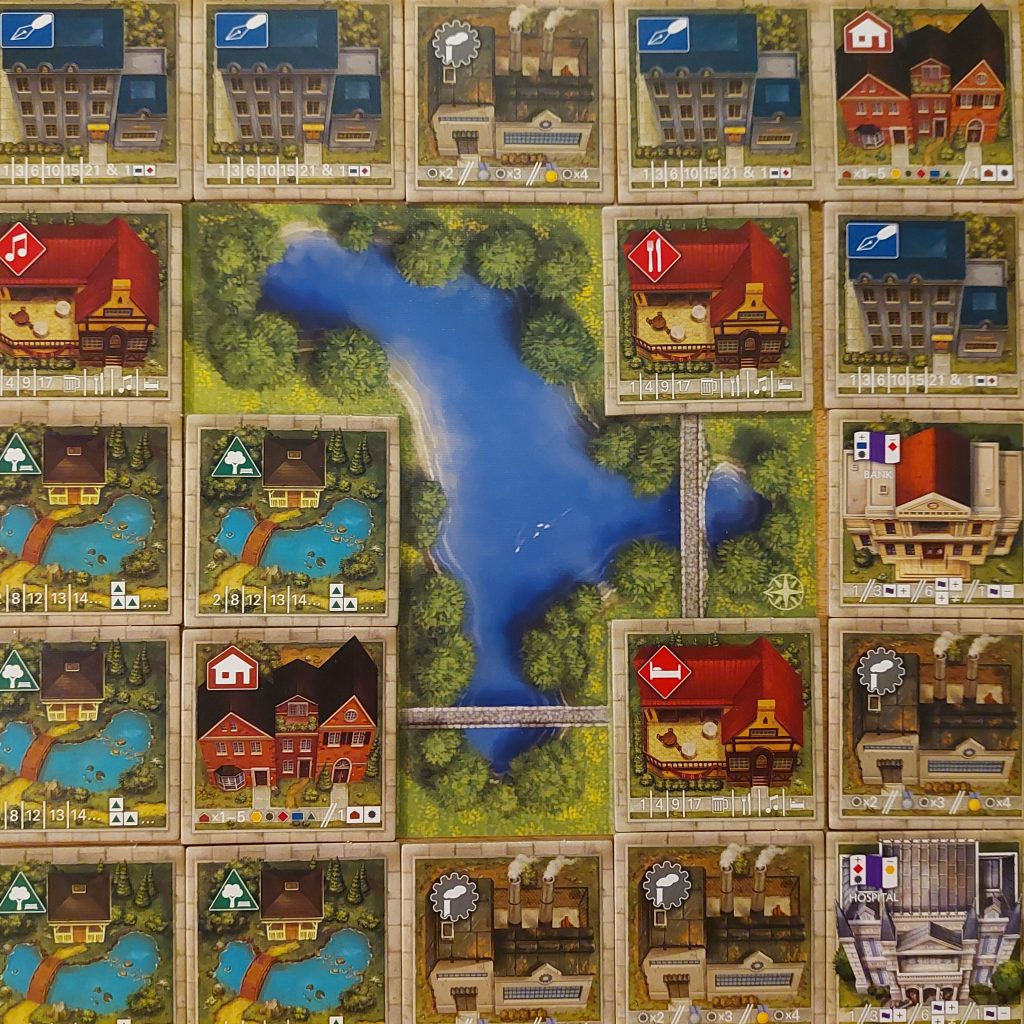
Devious Districts!
In the original Capitals, District scoring was mandatory. But now, being able to gain points via mixed pair majorities in connected district types is an optional advanced variant that comes into play if you decide not to add in Civic Buildings or use the landscape mats. I should say there’s nothing to say you can’t play them even if you choose to use landscape mats and Civic Buildings, but that will be triple crunch time if you do!
To play the District variant, three pairs of randomly drawn District cards are laid down as additional scoring objectives for the entire game. Only the largest mixed pair district in each city counts towards the District scoring objectives in play, and the point rewards for 1st and 2nd place can make a big difference.
Again, this makes Between Two Cities feel a lot more puzzly for us – more placement trade-offs to consider as well as numbers to crunch, particularly when factoring in luck of the draw and other player’s choices. With end game being the set-point, it will become clearer as to whether early tactics are paying off as the rounds go along. The sacrifices made to reach for these majorities might be worth it. Or they might look to be less certain. In which case, they are likely to have a considerable impact on drafting choices in the very early and late phases!
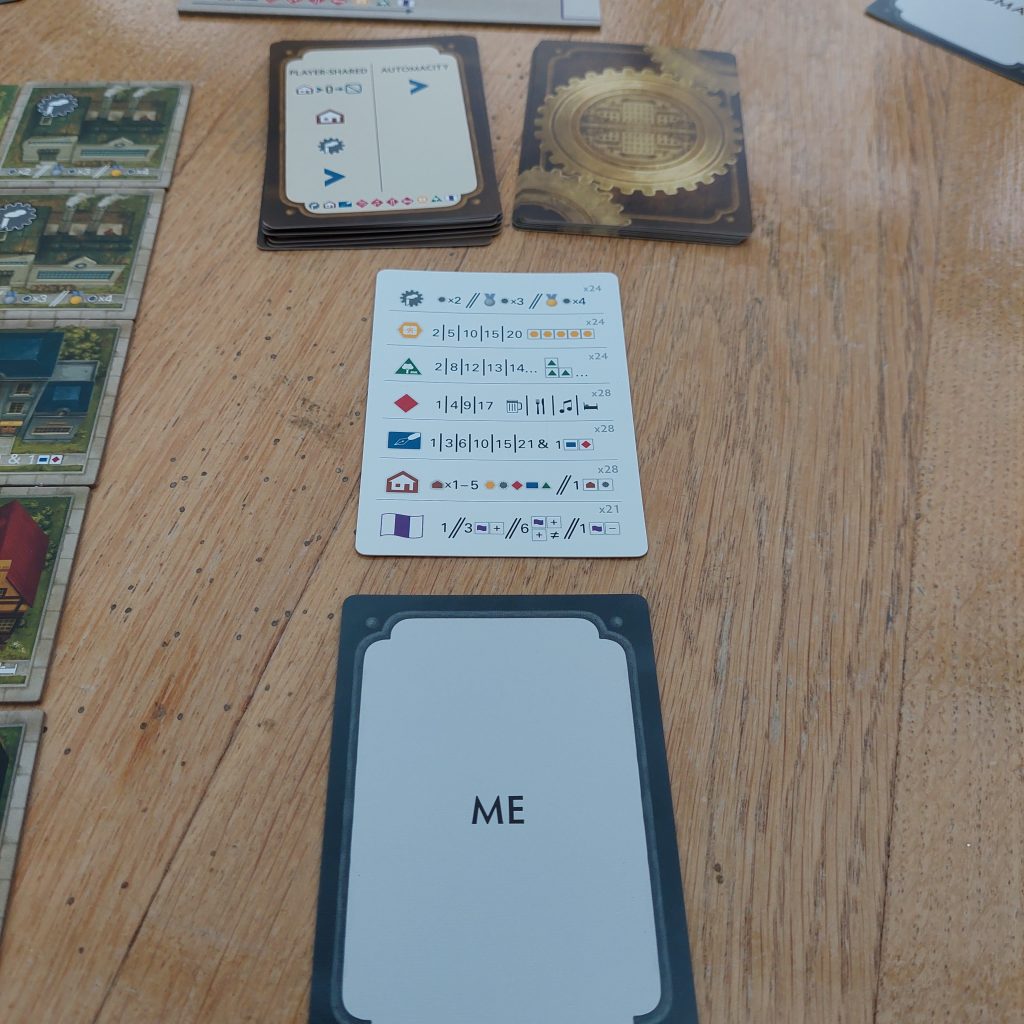
Welcome Jamey!
Now, if you have ever wanted to invite Jamey Stegmaier to play a game at your table, you have the chance! The advanced 2 player rules include Jamey as your friendly third player. He will help (or hinder!) in building one City with you in addition to the city you build with your real-life competitive constructor. Jamey is straightforward to run; in round one, he has 9 tiles just like a regular player. Then first player (i.e. the player sitting on Jamey’s left) randomly picks two of his tiles, choosing one for the city each player shares with Jamey. After choosing your own tile for your city and the one you share with Jamey, you reveal them and then place them (i.e. one in your city and one in the city you share with Jamey). One extra step happens in round two where players pick and place a random duplex tile in the city they share with Jamey. And finally, in round 3, the player who didn’t pick Jamey’s tiles in round one (i.e. the player to Jamey’s right) does the choosing this time.

Having played both the automa rules with 2 players in the original base game and with the addition of Jamey in this version, we prefer having Jamey round to play! It seems to run smoother – perhaps it is his calming influence haha. Plus we now need him what with these new plush Civic Buildings and landscapes to factor in! There are still two automa modes in the Essentials edition – simple (where the Automacity that the two automas build together just scores each Building type as highly (“maximally”) as possible) and full. But the AI deck now factors in Civic Buildings, and Automacity gets the automa mat in place of a landscape mat (which feature in the LeftVille and Rightown cities you build with each of Automarta and Autommaso).
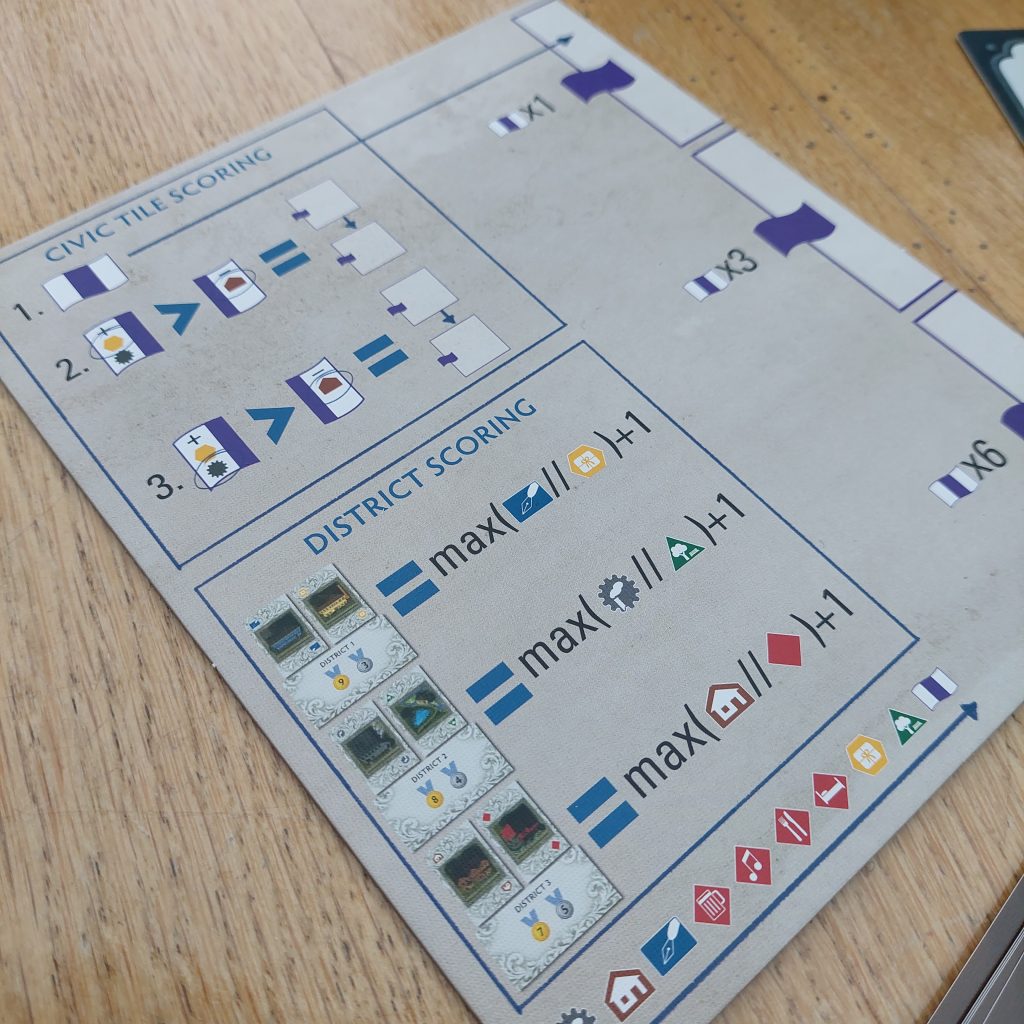
Scores on the Doors!
The final tweaks are the new score pad (which makes much more sense as the original scoring track board was HUGE! Like city-dwarfing, ridiculously big!), and slight scoring adjustments on some of the tiles. Oh and the seating order cards have been scrapped. Shops used to score 2/5/10/18 for rows/columns of 1/2/3/4 shops with Capitals rewarding 2 extra points for a 5th but these are now 2/5/10/15/20 to take into account the larger 5×5 grid. The final increment has increased from 18 to 20 if you can add that 5th shop to your group. Second tie breakers are also now broken by having majorities in Factories followed by Shops, Parks, taverns, Offices, Houses, and then Civic Buildings.
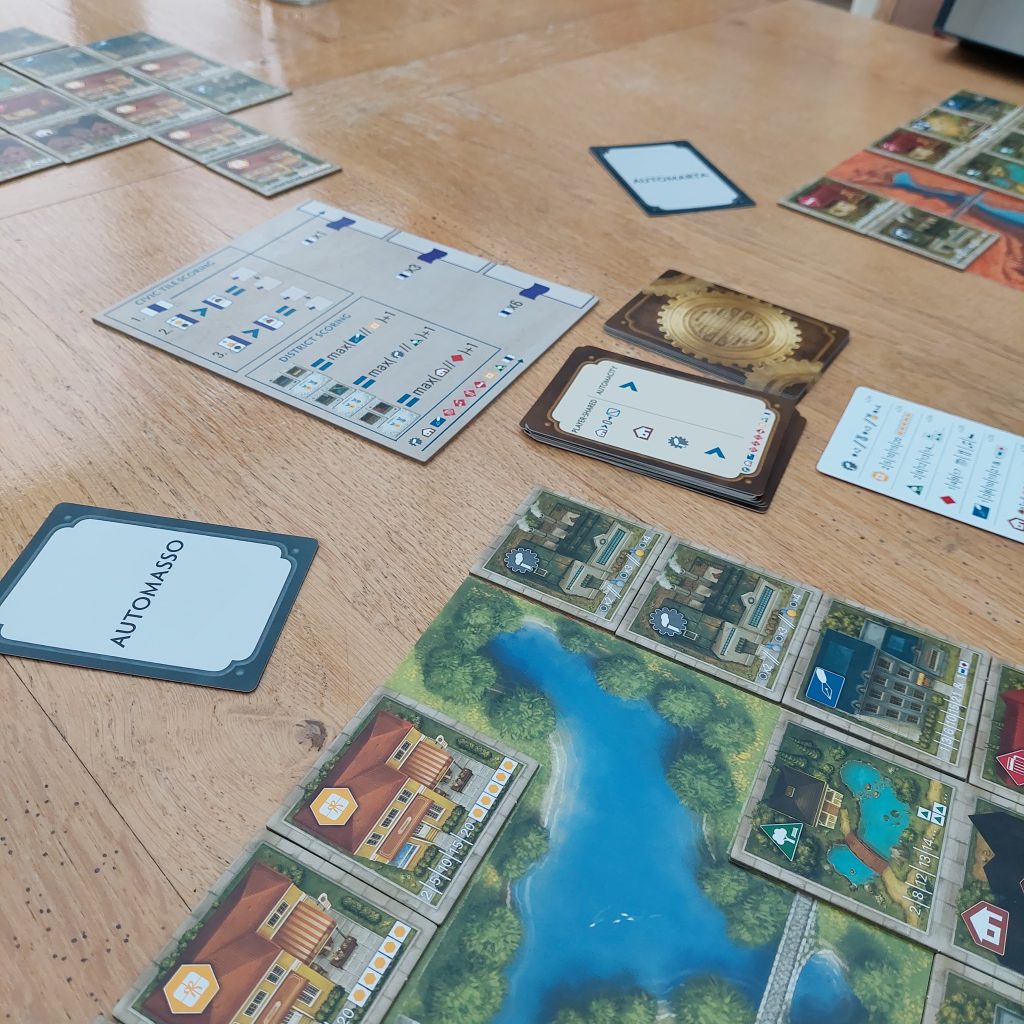
A Capital Idea!
So there we have it – the Essential edition brings the goodness of the base game and Capitals together in one (slightly larger) box. We didn’t get to play the original Capitals expansion before Essentials was released, but we really enjoyed the base game for being a quick, novel, tile laying spatial challenge. And although building two cities each is touted as a more aggressive game style, we like that head to head approach. Close drafting at 2 player count in games isn’t always popular as it can feel mean. But we think it works well here where the impact of what you take and leave is intended to immediately hit the other player directly every time.

And these additional elements really up the puzzle and replayability value for us. Playing mainly at 2 player, we need games that work at 2. We can get quite familiar with each other’s strategies when playing, and the base game did sometimes lean towards us regularly focussing on our preferred tile types (random draw depending). But now, with the addition of the asymmetric landscapes to break up our respective city spaces, and unique Civic Buildings where success depends on what is built around them, it feels like a much more unpredictable game space. And that is super! A little more to think about every time we draft a tile as leaving the others could create a number of new options for the other player. That can mean games take a little longer than before, but as puzzly, placement optimisation tile layers and close drafting games are amongst our favourites, more time to gain added replayability and crunch is a price we are willing to pay!
[Please note that a copy of this game was kindly provided by the publishers for review. I am not paid for my comments, however, and all opinions are my own]. I am also not affiliated to or sponsored by any retail store.
